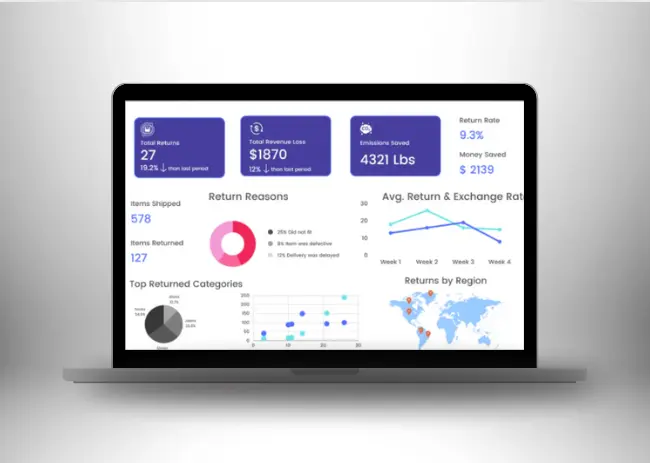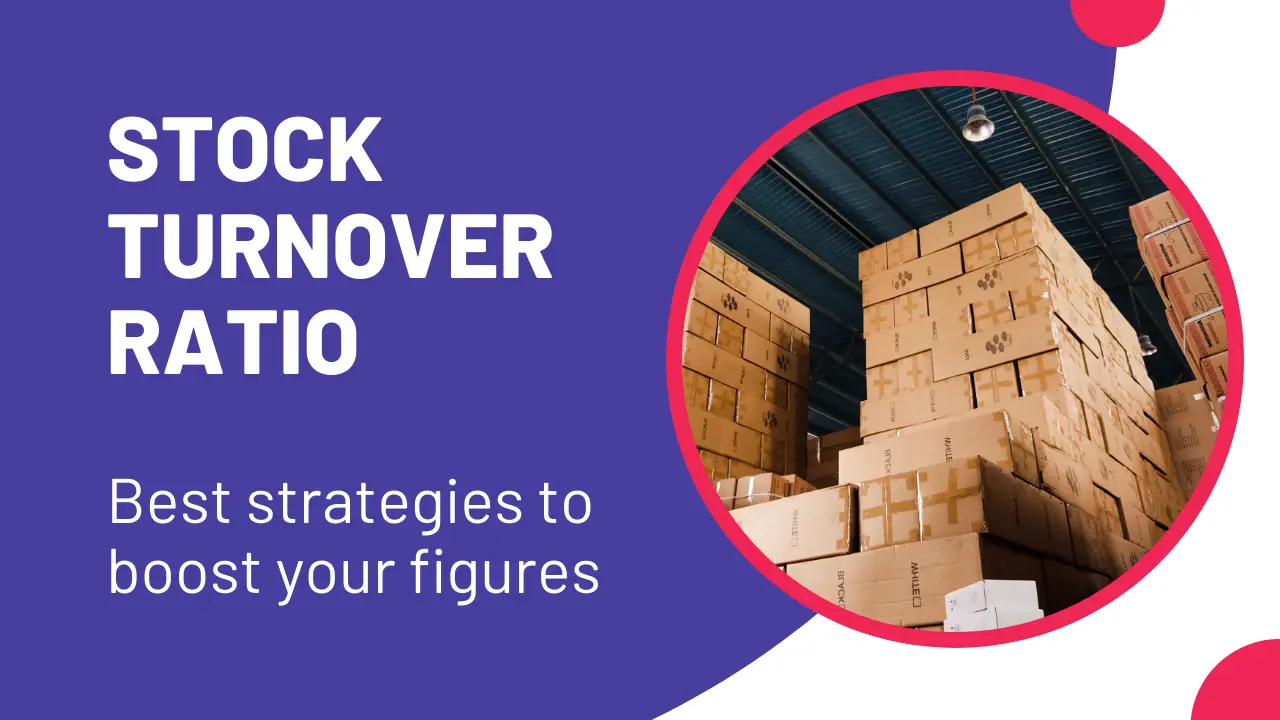The stock turnover ratio is a key metric in inventory management, indicating how often a company’s inventory is sold and replaced over a specific period. A high stock turnover ratio suggests that a business is efficient at managing its inventory and converting it into sales, while a low ratio may indicate overstocking or ineffective sales strategies. Improving this ratio is crucial for businesses aiming to optimize their operations and boost profitability. In this article, we’ll explore the best strategies to enhance your stock turnover ratio and drive better results.
What Is Stock Turnover Ratio?
The stock turnover ratio, also known as the inventory turnover ratio, measures how many times a company’s inventory is sold and replaced during a given period, typically a year. This ratio provides insight into how efficiently a business is managing its inventory, with a higher ratio indicating better performance.
Stock Turnover Ratio Formula
The formula for calculating the stock turnover ratio is as follows:


Where:
- Cost of Goods Sold (COGS) is the total cost of producing or purchasing the products that a company sells during the period.
- Average Inventory is calculated by adding the beginning inventory and ending inventory for the period and dividing by two.
For example, if a company has a COGS of $500,000 and an average inventory of $100,000, the stock turnover ratio would be:


Industry Benchmark: According to a study by the Retail Owners Institute, the average inventory turnover ratio for retailers in the U.S. is about 8. This means that for many retail businesses, inventory turns over approximately eight times per year. However, this number can vary significantly by industry. For example, the grocery sector typically sees a higher ratio due to the perishable nature of its inventory, while luxury goods may have a lower turnover due to higher price points and longer sales cycles.
Understanding and improving this ratio can help businesses reduce carrying costs, increase profitability, and enhance overall operational efficiency.
Best Strategies to Boost Your Stock Turnover Ratio
Improving your stock turnover ratio is crucial for maintaining a healthy and profitable business. Here are the top strategies to help you achieve that:
1. Optimize Inventory Levels


Maintaining the right balance of inventory is essential for improving your stock turnover ratio. According to a report by Gartner, companies that optimize their inventory management can reduce inventory levels by 20-50% while improving service levels by up to 10%. Regularly reviewing and adjusting your inventory levels based on sales data, market trends, and demand forecasts can help you maintain optimal stock levels.
2. Leverage Technology and Automation


Investing in inventory management software can provide real-time insights into your stock levels, sales trends, and supply chain performance. A report by Software Advice found that companies using inventory management software reduced stockouts by 30% and increased inventory turnover by 35%. Automation tools can also help streamline order processing, reduce errors, and optimize reordering. Additionally, integrating returns management systems with your inventory software can help you efficiently process returns, track returned items, and restock inventory quickly, further enhancing your stock turnover ratio and overall operational efficiency.


Automate Returns with EcoReturns
Switch to an AI-powered solution that reduces and automates returns and exchanges.
3. Implement Just-in-Time (JIT) Inventory Management


Just-in-Time (JIT) inventory management is a strategy where inventory is ordered and received just as it is needed for production or sales. This approach minimizes the amount of inventory on hand, reducing storage costs and increasing the stock turnover ratio. A study by McKinsey found that companies implementing JIT can reduce inventory holding costs by 25-50%.
4. Enhance Demand Forecasting


Accurate demand forecasting allows you to align your inventory levels with customer demand, preventing overstocking and stockouts. According to a survey by the Institute of Business Forecasting & Planning (IBF), companies that improve their forecasting accuracy can reduce inventory by up to 20% and increase sales by up to 5%. Utilizing advanced analytics and AI-driven forecasting tools can further refine your predictions and improve your stock turnover ratio.
5. Streamline Your Supply Chain


An efficient supply chain ensures that inventory is replenished quickly and accurately, reducing lead times and minimizing the risk of stockouts. Research by Deloitte indicates that businesses with agile supply chains are 70% more likely to be in the top quartile of financial performance within their industries. By building strong relationships with suppliers, negotiating better terms, and utilizing technology to track shipments, you can streamline your supply chain and improve your stock turnover ratio.


Ship globally at lowest rates with EcoShip.
EcoShip is an AI-powered shipping app with the widest coverage & lowest rates.
6. Increase Sales Through Promotions


Running targeted promotions and discounts can help move inventory faster, boosting your stock turnover ratio. A study by Nielsen found that 84% of consumers are more likely to visit a store during a sale or promotion, leading to increased sales and faster inventory turnover. Focus on slow-moving items or seasonal products to clear out excess stock and free up space for new inventory.
7. Improve Product Quality and Assortment


Offering high-quality products that meet customer needs and preferences can lead to higher sales and a better stock turnover ratio. According to a survey by Accenture, 91% of consumers are more likely to shop with brands that provide personalized offers and recommendations, which can be achieved by regularly reviewing your product assortment and discontinuing underperforming items. By continuously improving your product mix, you can increase customer satisfaction and encourage repeat purchases.
8. Enhance Customer Experience


A positive customer experience can drive repeat business and increase sales, positively impacting your stock turnover ratio. Research by PwC shows that 73% of consumers say customer experience is an important factor in their purchasing decisions. Focus on providing excellent customer service, fast shipping, and easy returns to encourage repeat purchases.
9. Review Pricing Strategies


Competitive pricing can attract more customers and increase sales velocity, improving your stock turnover ratio. According to a study by McKinsey, companies that implement dynamic pricing strategies see an average revenue increase of 2-5% and an increase in stock turnover by up to 10%. Regularly reviewing and adjusting your pricing strategy based on market conditions, competitor pricing, and customer demand can help you maintain an edge in the market.
10. Implement Vendor-Managed Inventory (VMI)


Vendor-Managed Inventory (VMI) is a strategy where the supplier is responsible for managing and replenishing the inventory at the retailer’s location. According to a study by the Aberdeen Group, companies using VMI improve inventory turnover by 20% and reduce stockouts by 30%. VMI allows for better collaboration between suppliers and retailers, ensuring that inventory levels are aligned with demand.
Conclusion
Improving your stock turnover ratio is essential for maintaining a healthy and profitable business. By implementing these strategies—ranging from optimizing inventory levels to enhancing customer experience—you can boost your figures and drive better business outcomes. Remember, the key to success lies in continuous monitoring, analysis, and adjustment of your inventory management practices. By doing so, you can significantly enhance your operational efficiency and profitability.



